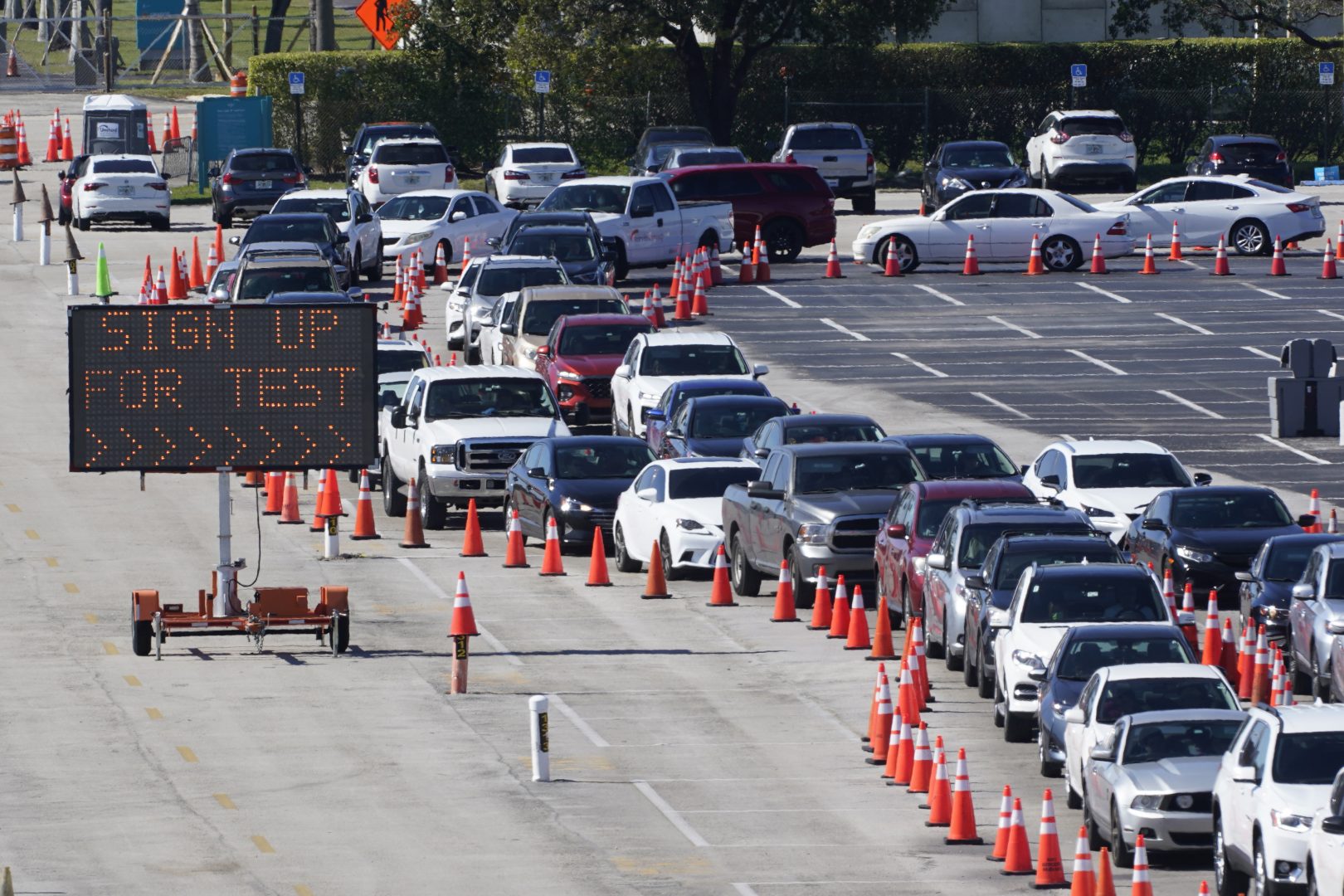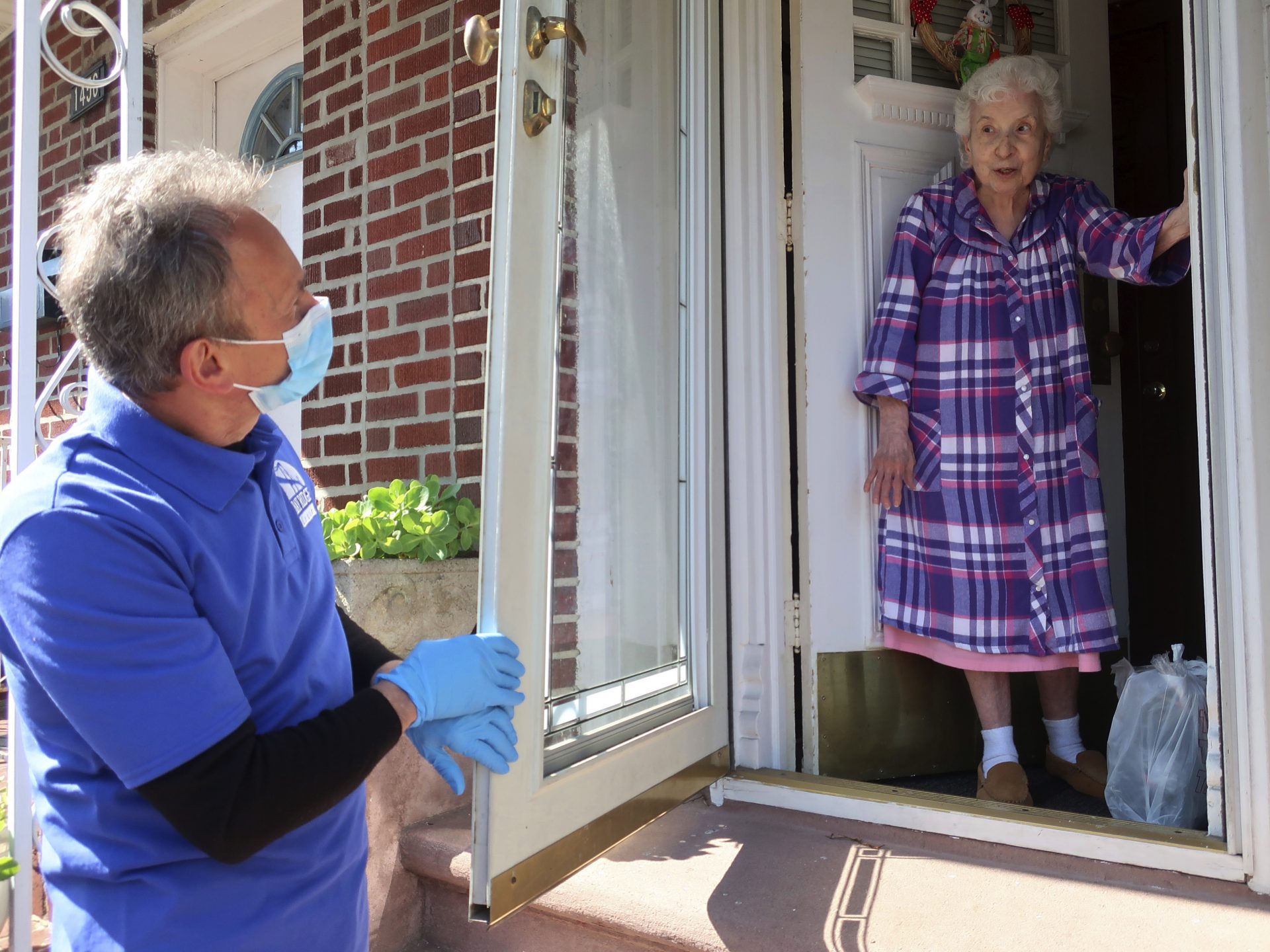
In this Jan. 5, 2021, file photo, cars line up for COVID-19 testing outside Hard Rock Stadium in Miami Gardens, Fla. Coronavirus hospitalizations are falling across the United States, but deaths have remained stubbornly high.
Wilfredo Lee / AP Photo

In this Jan. 5, 2021, file photo, cars line up for COVID-19 testing outside Hard Rock Stadium in Miami Gardens, Fla. Coronavirus hospitalizations are falling across the United States, but deaths have remained stubbornly high.
Wilfredo Lee / AP Photo

Wilfredo Lee / AP Photo
In this Jan. 5, 2021, file photo, cars line up for COVID-19 testing outside Hard Rock Stadium in Miami Gardens, Fla. Coronavirus hospitalizations are falling across the United States, but deaths have remained stubbornly high.
(Washington) — For the first time since November, average new daily coronavirus infections in the U.S. fell under 100,000–well below the average infection rate in December and January, according to data from Johns Hopkins University.
The seven day average of new infections dropped below 100,000 on Friday, continuing at that level through Sunday, according to the Johns Hopkins Coronavirus Resource Center. Researchers reported 83,321 new infections and 3,361 new deaths Sunday.
These figures are well below the average daily infection rate of 200,000 for December and nearly 250,000 in January.
Nevertheless, health experts warned the country has a long way to go before celebrating a turning point in the pandemic.
“We are still at around 1,500 to 3,500 deaths per day. The cases are more than two-and-a-half-fold times what we saw over the summer,” Dr. Rochelle Walensky, director of the Centers for Disease Control and Prevention, said on Meet the Press. “It’s encouraging to see these trends coming down, but they’re coming down from an extraordinarily high place.”
New, highly infectious coronavirus variants from the UK and South Africa pose a serious risk to any progress in the U.S.
The U.S. has recorded more than 27.5 million virus cases and more than 484,000 deaths, according to the Johns Hopkins data.

Ted Shaffrey / AP Photo
Meals on Wheels delivery driver Pasquale Fabbricatore, 66, delivers meals to homebound senior Louise Delija, 93, during the coronavirus pandemic, in the Brooklyn borough of New York on Thursday, May 7, 2020.
Reopening risks
Jennifer Nuzzo, an epidemiologist at Johns Hopkins, told NPR’s Rob Stein that U.S. communities are using the falling COVID-19 cases to justify the reopening of businesses and easing of restrictions.
Nuzzo said, “But this is a really worrisome time to be doing that because we’re so deeply worried about the potential spread of these variants.”
New York Gov. Andrew M. Cuomo announced last week that indoor dining in New York City can reopen at 25% capacity starting on Valentine’s Day because of the downward trajectory of the city’s coronavirus infections.
Cuomo said in his announcement, “As data on infection rates and hospitalizations continue to improve, we must begin taking steps to jumpstart our economic recovery as long as public health can be protected.”
He also announced plans to allow limited capacity wedding receptions to resume March 15 with no more than 150 people at an event. New York City recorded its weekly average of confirmed coronavirus cases to be 21,483 for the previous seven days. The city recorded an average of 1,889 hospitalizations and 455 deaths per day.
Montana Gov. Greg Gianforte lifted the statewide mask mandate Friday that had been in place since July. Montana recorded 142 new cases Sunday.
Gianforte said, “Since we’re not out of the woods yet, I will continue wearing a mask and encourage all Montanans to do the same to protect themselves, their loved ones, and their neighbors.”
The days of journalism’s one-way street of simply producing stories for the public have long been over. Now, it’s time to find better ways to interact with you and ensure we meet your high standards of what a credible media organization should be.